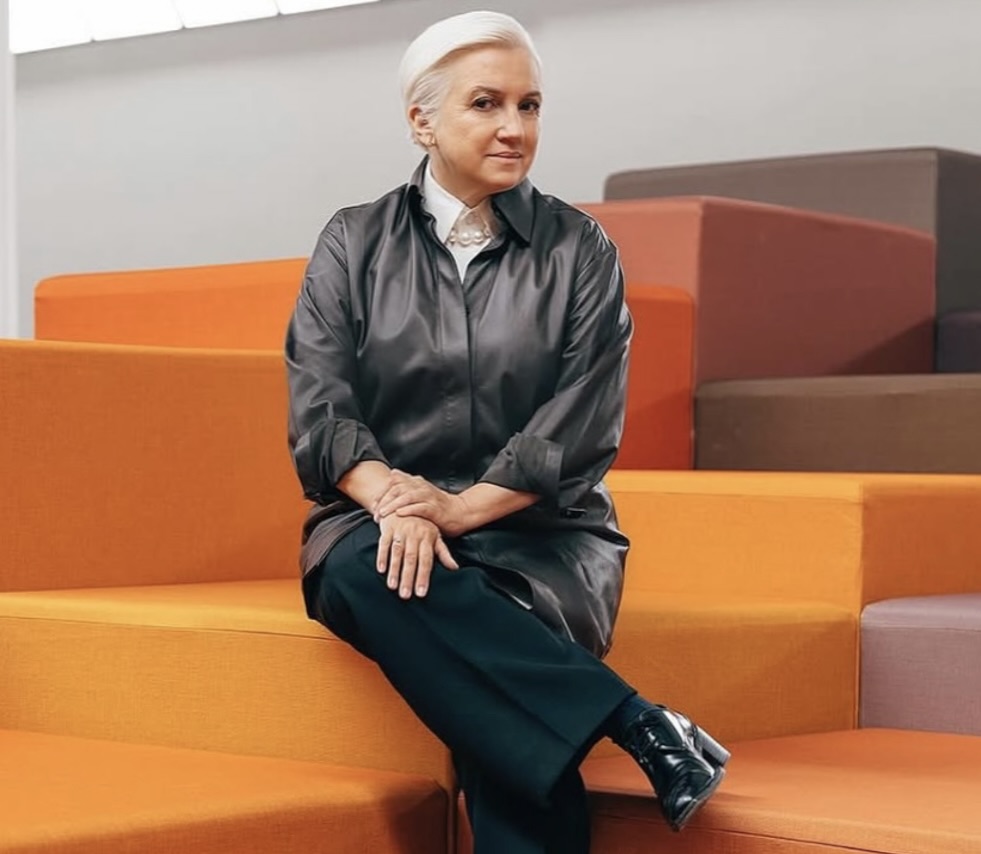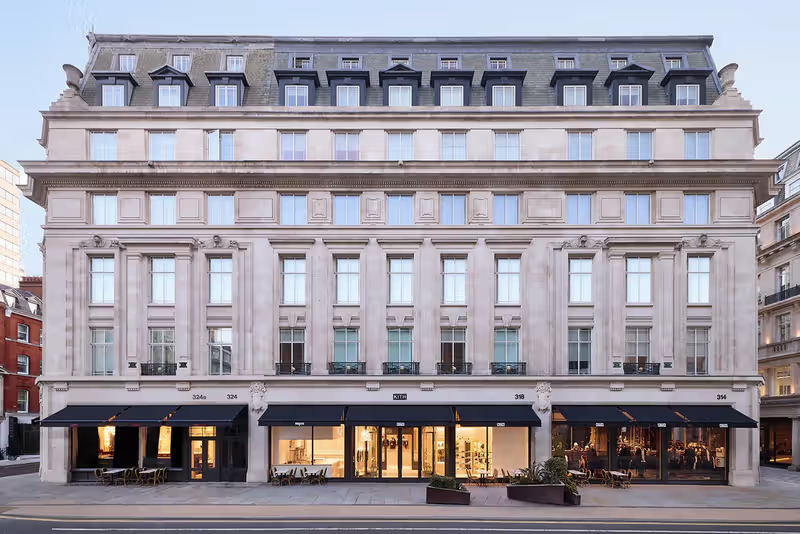A Defining Moment for Fendi
The fashion world thrives on moments of transition. Announcements of succession, new appointments, and creative reshuffles often ripple far beyond the confines of a single maison. The news that Silvia Venturini Fendi will be stepping down as creative director of Fendi, while taking on the mantle of honorary president, marks one of those moments. Confirmed by LVMH, this change signals not only a generational shift within one of Italy’s most storied fashion houses but also a symbolic closing of an extraordinary chapter.
For Silvia, a third-generation guardian of the family brand, the role has never been just about producing garments and accessories. It has been about legacy, stewardship, and shaping identity. Her career alongside Karl Lagerfeld, her leadership in accessories and menswear, and later her stewardship of womenswear after Kim Jones’s exit, cemented her as an anchor for Fendi’s modern identity. Now, as she moves into an ambassadorial role, the fashion world turns to a looming question: what comes next for Fendi?
Born into Fashion
Silvia Venturini Fendi grew up inside the world of the maison. As the granddaughter of Adele and Edoardo Fendi, who founded the Roman house in 1925, she inherited not just a surname but the responsibility of carrying forward a global symbol of Italian luxury. Unlike many who might have been burdened by heritage, Silvia embraced it with a quiet determination. Her early years with Fendi coincided with the height of Karl Lagerfeld’s long tenure, a partnership that would shape her vision for decades.
Lagerfeld and Silvia: A Symbiotic Partnership
From 1992 until Lagerfeld’s death in 2019, Silvia worked in creative dialogue with one of fashion’s most prolific designers. While Lagerfeld was the mercurial visionary driving womenswear, Silvia honed her expertise in menswear, leather goods, and accessories. Together, they created balance: his theatrical flair paired with her pragmatism and deep respect for craft.
It was under Silvia’s direction that Fendi produced some of its most enduring icons. The Baguette bag, launched in 1997, remains one of fashion’s ultimate status symbols—a “It bag” that transcended trend cycles to become an archetype. She transformed accessories into storytelling devices and pushed menswear into modernity, redefining how the Fendi man looked and dressed.
Holding the House Together
When Lagerfeld passed away in 2019, Silvia assumed even greater responsibility. She not only oversaw menswear and accessories but also stepped into womenswear leadership until Kim Jones was appointed. When Jones departed in 2024, Silvia once again took up the reins, guiding the maison through both continuity and reinvention. Under her steady hand, Fendi celebrated its centenary—a moment that honored not just longevity, but relevance.
A Brand Ambassador in the Truest Sense
Unlike celebrity ambassadors drafted for campaigns, Silvia embodies Fendi. Her presence assures customers and connectors alike that even as the brand shifts toward a new creative structure, its history and integrity will not be compromised. The honorary presidency is less about retirement and more about re-articulating influence—becoming the guardian of the brand’s aura while leaving space for new voices.
Potential Successors
Names inevitably circulate in industry chatter. Some predict a rising Italian designer might inherit the mantle to preserve the maison’s Roman identity. Others suggest LVMH may look to proven international talents with a track record in heritage revitalization. What is certain is that whoever takes over will face the formidable task of following both Lagerfeld’s theatrical background and Silvia’s grounded pragmatism.
A Roman Jewel in a Global Empire
LVMH, the world’s largest haute group, thrives on the individuality of its maisons. Each house represents a distinct narrative: Dior as the epitome of French couture, Louis Vuitton as the global traveler’s symbol, Celine as minimalist modernity. Fendi’s identity has long been tied to Rome—its architecture, its grandeur, its skittish yet rigorous design codes. Silvia was instrumental in maintaining this identity within the broader LVMH portfolio.
Strategic Implications
For LVMH, the transition presents an opportunity to further elevate Fendi’s profile, particularly in womenswear. Accessories and menswear remain strong, but womenswear has been a competitive battlefield. The right appointment could position Fendi to capture market share from its Parisian siblings and Milanese rivals.
Significance of a Dynasty
Fendi is one of the last remaining houses where the founding family still maintains active involvement. The Fendi sisters, including Silvia’s mother and aunts, helped shape its trajectory across decades. Silvia’s ongoing role ensures that the familial spirit—the sense of belonging that customers feel when buying a piece of Fendi—will continue. This blend of dynasty and conglomerate is rare in today’s fashion industry.
A Retrospective on Silvia’s Contributions
Accessories as Identity
Silvia elevated accessories from complements to protagonists. The Baguette was not just a bag but a cultural symbol, immortalized in television, music, and popular imagination. Later creations such as the Peekaboo further proved her instinct for shaping objects that embody personality.
Menswear with Depth
She reimagined Fendi menswear with an emphasis on sophistication and experimentation. Under her guidance, tailoring embraced playfulness without losing precision. Fur coats, bomber jackets, and sportswear silhouettes carried a distinctly Roman grandeur.
Champion of Craft
Silvia consistently spotlighted the artisans who power the maison. She positioned Fendi as not only a luxury brand but as a custodian of Italian craft traditions, ensuring techniques were preserved and reinvented for new generations.
A Broader Trend
Silvia’s step back is part of a larger generational shift in haute fashion. Houses that once relied on decades-long creative reigns are now embracing faster cycles of change. Alessandro Michele left Gucci, Virginie Viard departed Chanel, and Sarah Burton exited Alexander McQueen—all within recent years. Fendi’s restructuring fits this broader pattern of fluid creative leadership.
The Power of Brand Ambassadors
As heritage houses evolve, honorary titles such as Silvia’s have become increasingly significant. They provide continuity for loyal customers while freeing creative space for new talent. It’s a way of reassuring the market: the soul remains intact even if the signature changes.
A Legacy Secure, A Future Unfolding
Silvia Venturini Fendi’s move into the role of honorary president is not an ending but a recalibration. Her imprint on the maison is indelible: the bags that defined an era, the menswear that reimagined elegance, the guardianship of craft that elevated artisanship to global stage. She represents a bridge between the Fendi family’s founding values and the demands of a 21st-century haute conglomerate.
As Fendi enters its next chapter, speculation will swirl, names will be floated, and strategies debated. But one truth remains: Silvia Venturini Fendi’s presence ensures the brand’s soul will endure. Whoever inherits the creative mantle will not only design clothes but will also step into a story nearly a century in the making. The fashion world waits to see who will write the next act.
No comments yet.








